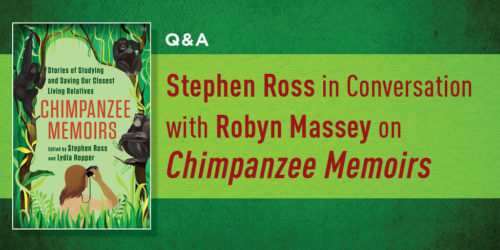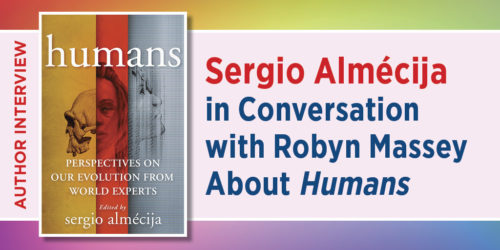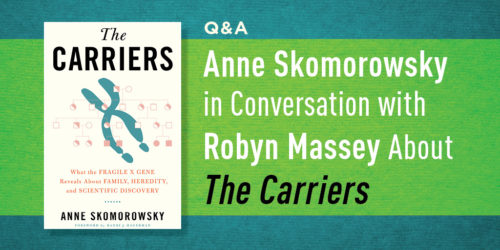Q&A: Kenneth D. Frank in Conversation with Robyn Massey about Sex in City Plants, Animals, Fungi, and More

From the garden in the back of his downtown rowhouse, Kenneth D. Frank observed the cornucopia of organisms that interacted and mated before his eyes. These observations made him wonder: how does the city interfere with these organismal orgies? In his new book Sex in City Plants, Animals, Fungi, and More, Frank chronicles the many incredible species that live in cities, the ways that those cities impede wild populations’ sexual reproduction—and the gene-altering consequences. In this conversation with publicist Robyn Massey, Frank shares his lifelong passion for observing and recording the discordant relationship of wildlife in the city, and he offers incredible insight on the natural world’s plight in our unnatural environment.
Robyn Massey: What inspired you to write this book?
Kenneth D. Frank: I live in downtown Philadelphia. I had already produced a book that described the natural history of the city’s plants and animals. That work alerted me to barriers that urban organisms face when they attempt to mate. These barriers raised an intriguing question: What reproductive strategies do wild populations in the city use?
Wild plants and animals that thrive in the city are widely distributed and abundant outside the city. A vast literature describes their biology. However, the literature is scattered in specialty journals, and it does not typically focus on cities. I sought a publication that would address my question comprehensively. It would synthesize the literature across a broad taxonomic range, including plants, animals, fungi, and bacteria.
My quest did not yield the publication I sought, but it inspired me to try producing my own publication. This would integrate the literature with my own observations, photographs, and interpretations. It would explore the species I found around me.
Massey: What surprised you most about writing the book—whether in research, writing, or response?
Frank: One big surprise was how much the process of producing this book captivated me. The book consists of about a hundred illustrated essays, each on a reproductive trait of a particular species or group. Most of the species were located in walking distance from our home. Almost all the photographs in the book are mine. The more I learned, the more I wanted to know, triggering self-reinforcing cycles of observing, photographing, writing, researching, and encountering new questions. The cycle continues to give me pleasure, which I suspect will be lifelong.
The insightful, appreciative reactions of two peer reviewers and other experts around the world also gave me an unanticipated lift.
Massey: What are the top three ideas or lessons you’d like the general reader to take away from your book?
Frank: I’d rank these three at the top:
1. Cities both facilitate and impede the reproduction of wild plants and animals. Historically, port cities of eastern North America have been gateways for the introduction of exotic species—like mugwort, which proliferated and became the “quintessential urban weed.” By contrast, garter snakes are not common in cityscapes. One of the many reasons for their rarity is the high density of urban streets. Pavement interferes with males’ ability to track females’ pheromone trails.
2. Sexual reproduction in large wild populations in the city promotes genetic mixing and fitness, but sexual reproduction in small, isolated populations in the city may cause genetic harm. For example, cities offer white clover expansive turf in public green spaces where pollination promotes genetic mixing. By contrast, cities may confine American toads to small, isolated populations centered around ponds where sexual reproduction may erode fitness and lead to local extinction.
3. The dominant reproductive habitat in landscapes covered with concrete and asphalt is the pavement crack. The pavement crack traps seeds carried by wind and water. It also captures and stores organic matter, which acts like potting soil. The sides of the crack protect seedlings from trampling and desiccation, and they direct water into the soil. The pavement crack is a natural nursery.
Massey: Who do you think has the most to gain from your book?
Frank: Readers with the most to gain are those who like to explore the natural world but who want to do more than identify species. Others who stand to gain are people who like to study wild plants and animals close to home. These people can leisurely return repeatedly to a site and make serial observations over time. They could, for example, track the reproductive maturation of a common dandelion plant, or the growth of chicks in a robin’s nest.
Massey: Your book is filled with such wonder. What do you feel is the most surprising wonder you came across as you put your book together? Are there any specific everyday wonders that you feel are too overlooked?
Frank: As I put the book together, two examples of reproduction particularly surprised me. My descriptions are necessarily technical.
The first is the milkweed aphid, also known as the oleander aphid. It never mates. Natural populations of this tiny insect contain no males. Unmated females give birth, and they produce exclusively daughters. They give birth live, and their daughters are pregnant at the time of delivery. Mothers carry simultaneously both their developing daughters and their developing granddaughters inside their daughters. This telescoping of generations is possible because the milkweed aphid produces embryos from egg cells without fertilization. In mammals, embryos develop from egg cells only after fertilization, and fertilization requires mating, which can happen only after birth. In the milkweed aphid, embryos begin developing from eggs inside their mother before she is born.
The second is common chickweed. In the morning, it produces tiny flowers that open as functionally male. Later in the day, it becomes bisexual, possessing separate male parts and female parts. If the functionally male part fails to attract a pollinator, then later that day the male parts bend inward toward the female parts until they touch. At this point, the flower pollinates itself.
As to the question of everyday wonders that I feel are overlooked, I would point to mosses and lichens on bark of street trees. They complete their entire life cycles on tree bark. They are easy to miss. Lichens on bark may be yellow, green, gray, or white. Mosses are generally green and may be partly hidden in the crevices of the bark. Depending on the species, they may reproduce sexually, vegetatively, or both. How cities affect their modes of reproduction remains to be explored.
Massey: Your inclusion of plants and animals is quite comprehensive. Why did you not include pigeons or rats?
Frank: I did not include rats because I have never succeeded in photographing one. I omitted opossums and racoons for the same reason. They are all nocturnal and challenging to observe compared to diurnal animals. I omitted pigeons because they did not come to the garden in the back of our downtown rowhouse. Our garden provided the setting where I photographed all the birds in courtship illustrated in my book. These birds include mourning doves, which have much in common with pigeons.
I regret omitting pigeons and rats. Both are quintessential urban species, and the reproductive biology of each is fascinating. I hope these omissions will encourage others to extend the study of urban reproductive diversity to many more species.
Massey: Do you have a favorite urban nature spot that you might recommend?
Frank: What is a favorite nature spot? Friends have recommended that I take ecotours like those they loved in jungles in Costa Rica; or that I take strolls in verdant parks in Philadelphia. In college I was thrilled to have spent two summers in an idyllic tropical mountain forest in Trinidad, where I was a research assistant.
Now my favorite nature spots are close to home. We do not own a car, and we walk to most of our destinations. I like to visit overgrown alleyways and untended areas beside rowhouses. Vacant lots attract me, but they are scarce in our part of town. During our strolls I’ll get down on my hands and knees to inspect vegetated cracks in the pavement. Worried homeowners and shopkeepers have imagined that I am a health inspector or a crime scene detective, or that I have collapsed.
When we speak of a favorite urban nature spot, each of us has our own idea of what we would like to experience. For most of us, this means a sanctuary surrounded by naturalized landscapes. My book illustrates how one can appreciate nature in cityscapes. Cities are dedicated to serving one species, Homo sapiens. I like to observe other species defiantly sharing our space. How they came here, and how they manage to stay, are wonders that my favorite urban nature spots invite me to contemplate.
Massey: Anything else you’d like to add?
Frank: My observations are local, but the reproductive diversity they represent is universal. Many species presented in my book are cosmopolitan in distribution, and none is limited to Philadelphia. Readers will find that their cities lack some of these species. However, the basic modes of reproduction featured in this book occur around the world.








